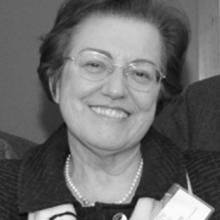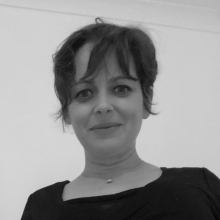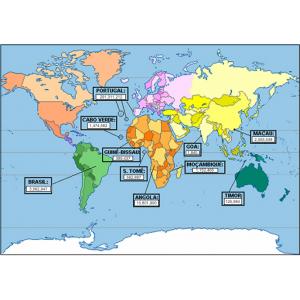Grammar & Resources
The group is centered on modeling linguistic knowledge, integrating interfaces between different areas of grammar and knowledge about how language is put to use. Joint work in formal phonology, lexicon, syntax and semantics allows building an integrated model of grammar, considering how it is represented in the human mind, as well as how it can be computationally modelled; work on L1 and L2 acquisition is at the core of this work. The integration of models of language representation and models of language use is achieved through the study of corpora.
The production of corpora and resources is justified by the goal of developing documentation and providing descriptions of contemporary European Portuguese, but also of understudied contact languages or varieties (Portuguese-based creoles, national varieties of Portuguese in Africa and Asia). The group also produces resources for the study of L1 and L2 acquisition in different settings. The group integrates CLARIN LP.
Research on L1 and L2 acquisition contributes to CLUL’s general purpose of effectively articulating fundamental and applied research, namely in the areas of Educational Linguistics and Clinical Linguistics.
General goals:
- To produce new resources for the study of Portuguese and Portuguese-based creoles;
- To pursue basic research on natural language modeling, integrating knowledge on interfaces between language modules;
- To continue the documentation and description of understudied creoles and new varieties of Portuguese that emerged in a context of language contact;
- To develop the study of language acquisition with an emphasis on language contact situations (see new international Heritage Language Consortium) and on the comparison between typical and atypical development;
- To explore the potential of comparative linguistics in the production of resources for translation and to promote connections with the industry in the area of translation.
Membros
Integrated members with PhD
Integrated members without PhD
Colaboradores
Concluded
| Project | Date | Fin. |
|---|---|---|
| ParlaMint II - ParlaMint II | - | |
| PALMA - Possession and Location: Microvariation in African Varieties of Portuguese (PALMA) | - | FCT
|
| RECAP - RECAP: Resources for Portuguese Learning | - | FCG
|
| CLARIN - CLARIN | - | |
| Documentation of Sri Lanka Portuguese | - | |
| LeCIEPLE - LeCIEPLE - Learner Corpus: da investigação ao ensino de Português Língua Estrangeira/Língua Segunda | - | FCG
|
| Portuguese-based creoles of the Dravidian space: Diachrony and synchrony | - | |
| TAXE - TAXE - Parataxis, Hypotaxis and Interface Syntax-Discourse | - | |
| COPAS - COPAS - Contrast and Parallelism in Speech | - | |
| CLAP - CLAP - Complement clauses in the Acquisition of Portuguese | FCT
|
|
| SemiAutLex.PT - SemiAutLex.PT - Semi-automatic construction of relational lexica for Portuguese | - | FCT
|
| SynExtract - SynExtract - automatic extraction of synonymy relations for a cost-effective acquisition of language resources | - | FCT
|
. (2007). Sobre o Pé e a aquisição do Ponto de Articulação no Português Europeu, in Textos Seleccionados do XXII Encontro Nacional APL. In (pp. 273-286). Lobo & M. A. Coutinho. Lisboa: APL. |
. (2005). A sílaba, in Fonética e Fonologia. In (pp. 244-277). Mateus, I. Falé & M. J. Freitas. Lisboa: Universidade Aberta. |
. (2003). Os pontos nos seus lugares: as líquidas na aquisição do Português Europeu. In Razões e Emoção. Estudos para Maria Helena Mateus (pp. 307-326). I. Castro & I. Duarte. Lisboa: INCM. |
. (2003). Estruturas temporais da fala: lendo notícias na TV. In Caminho (Fonética do Português. Trinta Anos de Investigação and ed. R. Delgado-Martins. Lisboa, pp. 225-230). . |
. (2003). Contributo para a identificação de elementos estruturadores da entoação na leitura. In Caminho (Fonética do Português. Trinta Anos de Investigação and ed. R. Delgado-Martins. Lisboa, pp. 231-240). . |
. (2003). Estruturação temporal da fala: análise acústica e reconhecimento perceptivo. In Caminho (Fonética do Português. Trinta Anos de Investigação and ed. R. Delgado-Martins. Lisboa, pp. 263-270). . |
. (2002). Pratos, patos e p[ɨ]ratos: o caso da aquisição dos Ataques complexos em Português Europeu. In Saberes no Tempo. Homenagem a Maria Henriqueta Costa Campos (pp. 299-314). M. H. Mateus & C. N. Correia. Lisboa: Edições Colibri. |
. (2001). Sobre a representação das vogais nasais em Português Europeu: evidência dos dados da aquisição. In Aquisição de Língua Materna e de Língua Estrangeira. Aspectos Fonético‑Fonológicos (pp. 87-110). C. Matzenauer. Pelotas: Educat. |
. (2001). Interaction between Prosody and morphosyntax: plurals within Codas in the acquisition of European Portuguese. In B. Höehle & Weissenborn, J. (Eds.), Approaches to Bootstrapping. Phonological, Lexical, Syntactic and Neurological Aspects of Early Language Acquisition (p. 45‑58). B. Höehle & J. Weissenborn. Amsterdam: John Benjamins Publishers. |
. (2000). O conhecimento fonológico. In Língua Portuguesa. Instrumentos de Análise (pp. 215-291). I. Duarte. Lisboa: Universidade Aberta. |
. (2000). O oral e o escrito. In Língua Portuguesa. Instrumentos de Análise (pp. 379-420). I. Duarte. Lisboa: Universidade Aberta. |
. (1997). Níveis de processamento silábico em Língua Materna: de que modo as imitações realizadas pelas crianças fornecem informação sobre fases de aquisição fonológica?. In Sentido que a Vida Faz. Estudos para Óscar Lopes (pp. 601-615). I. Lima, F. Oliveira, A. M. Brito & R. Martelo. Porto: Campo de Letras. |
. (1995). Alveolar trill(ions) of problems: evidence from children acquiring European Portuguese syllables, in Studies on the Acquisition of Portuguese. In (I. H. Faria and M. J. Freitas. Lisboa, p. 55‑70). Colibri/APL. |
. (1992). Contributo para o estudo de padrões de estruturação temporal da fala no Português Europeu, in Estudos em Prosódia. In (A. I. Mata and M. J. Freitas. Lisboa, pp. 75-103). I. Pereira. |
. (2013). The Gulf of Guinea creoles: genetic and typological relations, in Creole languages and linguistic typology. In (pp. 163-206). Bhatt & T. Veenstra. Amsterdam, Philadelphia: John Benjamins. |
. (2013). Santome. In The Survey of Pidgin and Creole Languages (Vol. II: Portuguese-based, Spanish-based, and French-based Languages, pp. 50-58). Michaelis, P. Maurer, M. Haspelmath & M. Huber. Oxford: Oxford University Press. |
. (2009). Initial vowel agglutination in the Gulf of Guinea creoles, in Complex processes in new languages. In (pp. 29-50). Aboh & N. Smith. Amsterdam/Philadelphia: John Benjamins. |
. (2009). Aspects of discontinuous negation in Santome, in Negation patterns in West African languages and beyond. In (pp. 139-165). Cyffer, E. Ebermann & G. Ziegelmeyer. Amsterdam/Philadelphia: John Benjamins. |
. (2008). Languages in São Tomé and Príncipe. In Bradt travel guide for S. Tomé e Príncipe. . |
. (2008). Lungwa Santome vocabulary. In Bradt travel guide for S. Tomé e Príncipe (pp. 201-210). . |
. (2003). Languages in São Tomé and Príncipe, in Bradt guide for Gabon and S. In (pp. 188-189). Tomé e Príncipe. |
. (2001). Semi-lexicality and underspecification in serial verb constructions, in Semi-lexical categories. In (pp. 415-451). Corver & H. van Riemsdijk. New York: Mouton de Gruyter. |
. (2012). Le discours d’expert de l’analyse conjoncturelle au Monde et à l’INSEE: De Sirius à Knock, in Discours d’experts et d’expertise. In (pp. 47-73). Garric & I. Léglise. Berne: Peter Lang. |
. (2012). Le mot marché(s) dans les comptes rendus boursiers : entre métonymie et personnalisation. In Les discours de la bourse et de la finance. Forum Für Fachsprachen-Forschung (pp. 159-177). L. Gautier. Berlin: Frank und Timme. |
. (2009). Quand já ne se traduit pas par déjà. In Estudos linguísticos 2 (pp. 123-140). Lisboa: Colibri. |
. (2009). Kärcher et racaille, ou quand un événement énonciatif déteint sur le sens des mots, in La circulation des discours. In (pp. 163-185). Munoz, S. Marnette, L. Rosier & D. Vincent. Québec: Editions Nota Bene. |
. (2006). Le brouillage énonciatif dans le compte rendu de documents techniques : le cas du Monde et des Notes de conjoncture de l’INSEE. In Dans la jungle des discours. Genres de discours et discours rapportés (pp. 237-248). J. M. Lopez-Muñoz, S. Marnette & L. Rosier. Cadiz: Publicaciones de la Universidad de Cadiz. |
. (2013). Modo, Gramática do Português. In Eduardo Paiva Raposo et al. Lisboa: Fundação Calouste Gulbenkian, cap (Vol. 19, pp. 671-693). Lisboa: Fundação Calouste Gulbenkian. |
. (2010). Modality, Context Change Potential and Mood selection, in Modality and Mood in Romance: Modal interpretation, mood selection, and mood alternation. In (pp. 133-161). Linguistische Arbeiten 533. |
. (2009). On the selection of mood in complement clauses, in Cross-Linguistic Semantics of Tense, Aspect, and Modality. In (pp. 179-204). L. |



















































